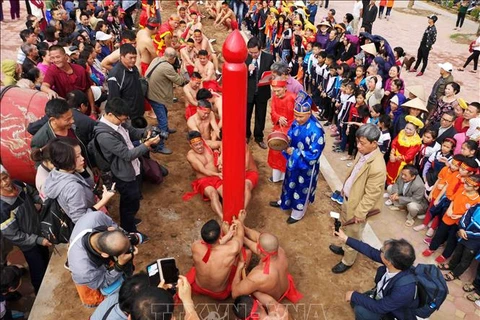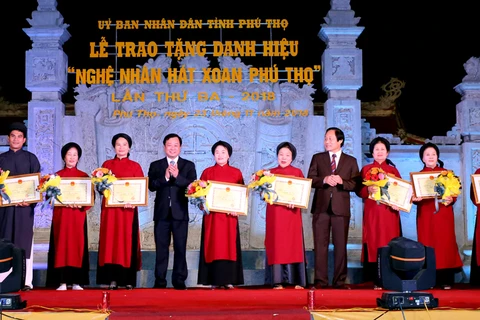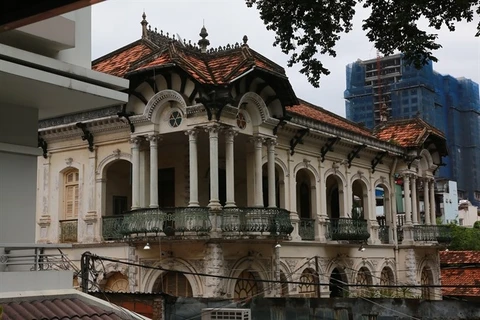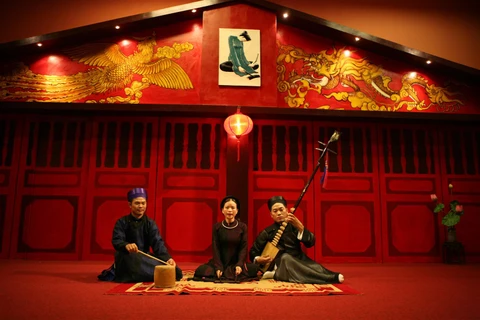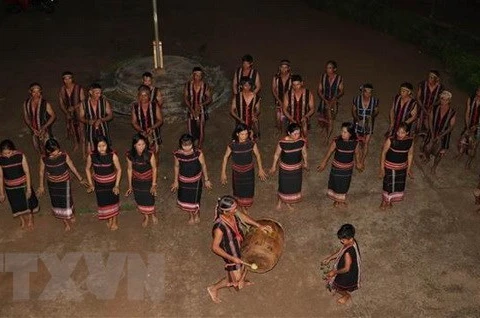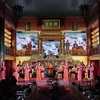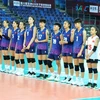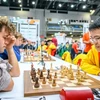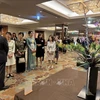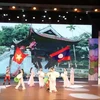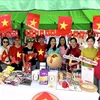 The festival, held annually on the third day of the third lunar month, manifests the local people’s aspiration for a peaceful life (Photo: Thanh Tung/VNA)
The festival, held annually on the third day of the third lunar month, manifests the local people’s aspiration for a peaceful life (Photo: Thanh Tung/VNA)  The game originated from an old story which goes that 11 of 12 wells in the village were dry when the village suffered a prolonged drought, only the well in Dia hamlet still had water (Photo: Thanh Tung/VNA)
The game originated from an old story which goes that 11 of 12 wells in the village were dry when the village suffered a prolonged drought, only the well in Dia hamlet still had water (Photo: Thanh Tung/VNA)  Residents in the hamlet did not want to share the water with other hamlets so they prevented men from Duong and Cho hamlets from taking any. (Photo: Thanh Tung/VNA)
Residents in the hamlet did not want to share the water with other hamlets so they prevented men from Duong and Cho hamlets from taking any. (Photo: Thanh Tung/VNA)  The two sides had to sit down to keep the water pail on their side for fear of spilling water out of the pail (Photo: Thanh Tung/VNA)
The two sides had to sit down to keep the water pail on their side for fear of spilling water out of the pail (Photo: Thanh Tung/VNA)  The elders in the village made the tug-of-war while sitting down to remember the old story and pray for favourable weather conditions and bumper crops (Photo: Thanh Tung/VNA)
The elders in the village made the tug-of-war while sitting down to remember the old story and pray for favourable weather conditions and bumper crops (Photo: Thanh Tung/VNA)  Two teams sit on the ground and tug a rope over 30 metres long that is passed through a hole in a wooden pole fixed firmly in the ground (Photo: Thanh Tung/VNA)
Two teams sit on the ground and tug a rope over 30 metres long that is passed through a hole in a wooden pole fixed firmly in the ground (Photo: Thanh Tung/VNA)  The pole in the middle symbolises the linga, or male virility, and the tugging back and forth denotes the longing for growing and bumper crops (Photo: Thanh Tung/VNA)
The pole in the middle symbolises the linga, or male virility, and the tugging back and forth denotes the longing for growing and bumper crops (Photo: Thanh Tung/VNA)  It also reinforces and renews social relationships and strengthens communal solidarity (Photo: Thanh Tung/VNA)
It also reinforces and renews social relationships and strengthens communal solidarity (Photo: Thanh Tung/VNA)  The game was not played during the war and for over a decade after national reunification (Photo: Thanh Tung/VNA)
The game was not played during the war and for over a decade after national reunification (Photo: Thanh Tung/VNA)  In 1989, the villagers restored the event and held it on the same day of the local festival (Photo: Thanh Tung/VNA)
In 1989, the villagers restored the event and held it on the same day of the local festival (Photo: Thanh Tung/VNA) VNA


